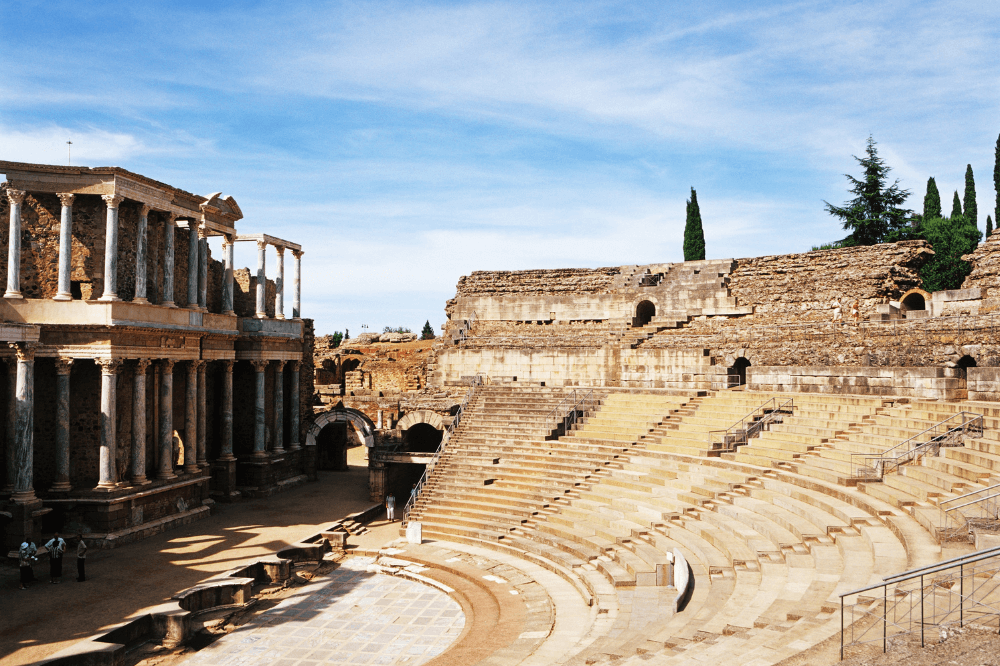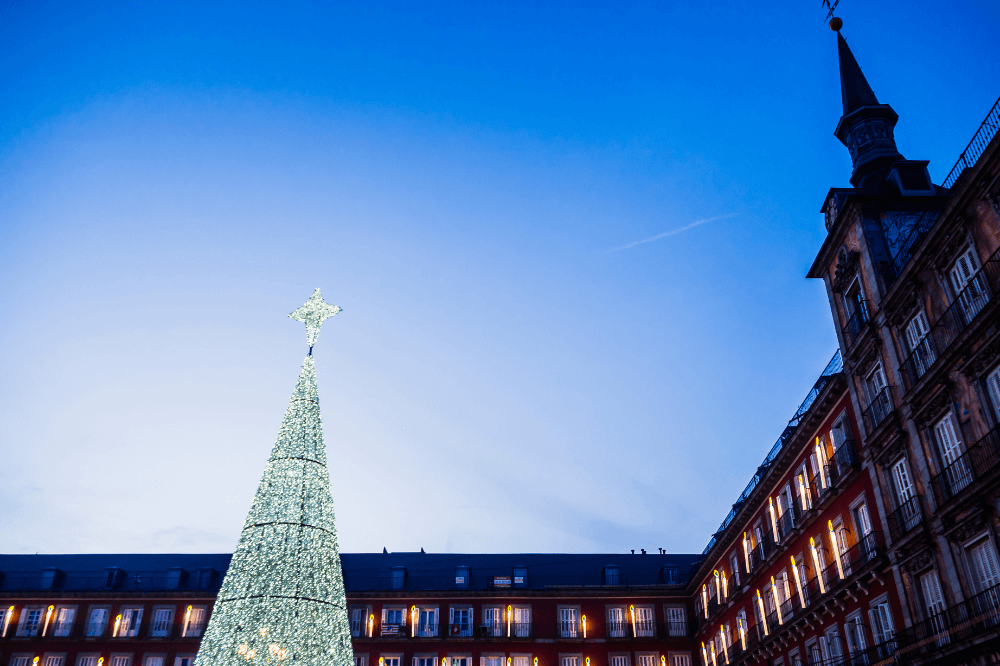Spain is much more than sun, beaches, and cities like Madrid, Barcelona, or Seville. In fact, it’s one of the countries with the richest history in Europe.
But you already know that.
Because if you’ve made it this far, it’s because you love history, you love to travel, and you want to know which Roman ruins in Spain are truly unmissable.
If that’s the case, keep reading because up next, we’ll tell you about the best places in the country for fans of the Roman Empire.
Cities, monuments, engineering feats… everything you can’t miss if you’re passionate about history.
Let’s get started!
The Great Roman Cities
Let’s begin with the crown jewels those cities that will leave you speechless thanks to their imperial past.
Mérida (Emerita Augusta, Extremadura)
You have to start here.
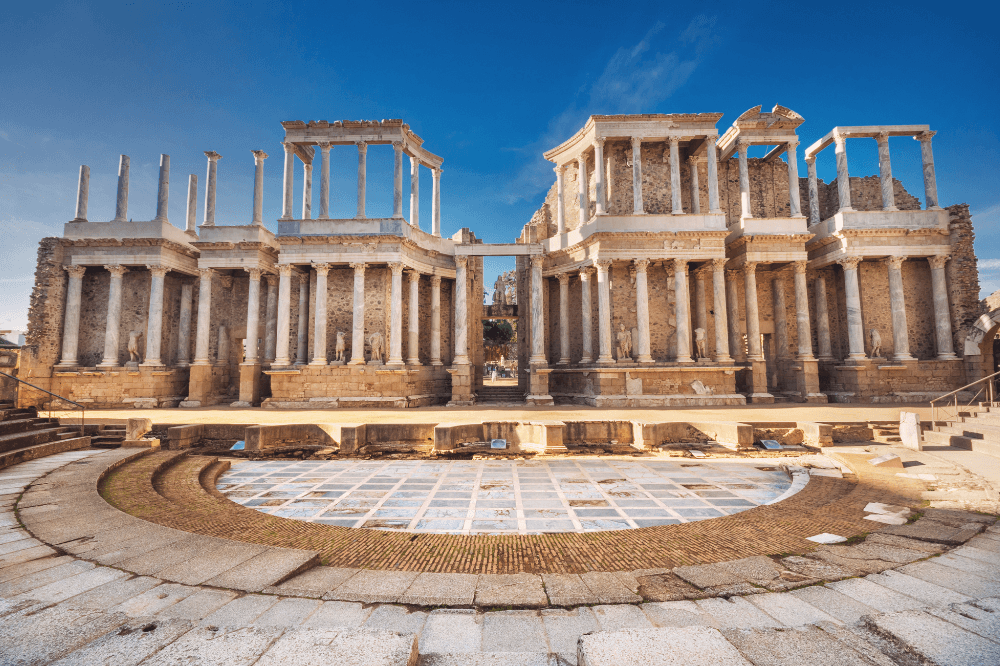
Mérida was founded in the 1st century BC as a colony for retired soldiers, the so-called emeriti. Just imagine the history it holds!
Its star monuments are absolutely stunning:
- The Roman Theatre is iconic, one of the most famous, and it’s still in use! It hosts the Mérida International Classical Theatre Festival.
- Right next to it is the Roman Amphitheatre, where gladiator fights once took place.
- Don’t miss the Temple of Diana and the Arch of Trajan.
- And of course, be amazed by the Acueducto de los Milagros over 800 meters long and reaching up to 25 meters in height!
Beyond the ruins, you absolutely must visit the National Museum of Roman Art, which houses some incredible mosaics.
Explore our experiences with local cooks.
Tarragona (Tarraco, Catalonia)
Now we head to the coast.
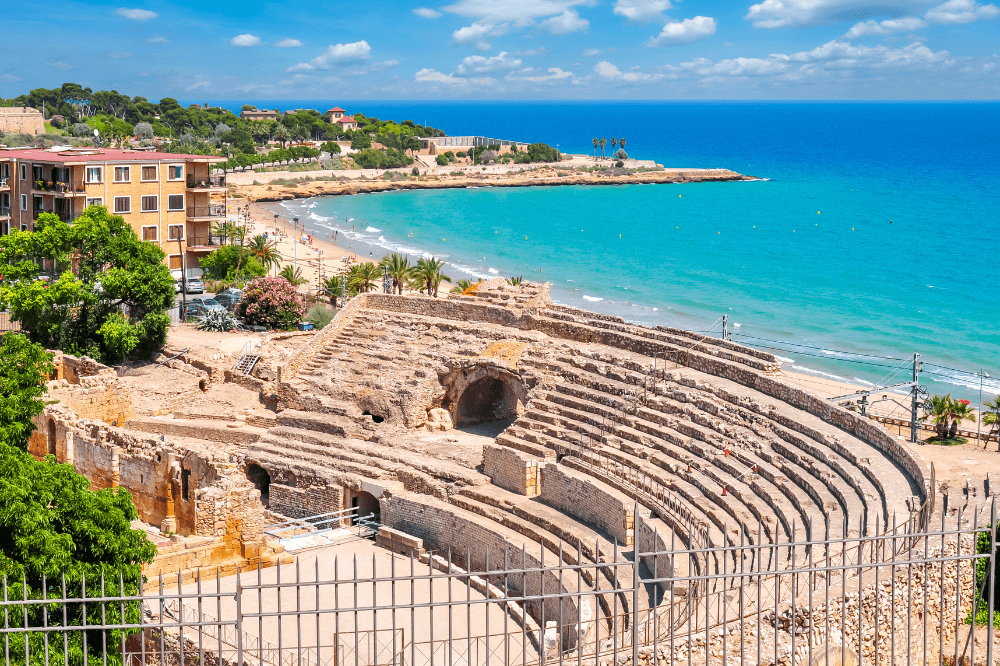
This city is key, it was the first and oldest Roman settlement on the Iberian Peninsula.
It was also the capital of the province Tarraconensis, and because of all this, its archaeological complex has been a UNESCO World Heritage Site since 2000.
Here’s a list of the ruins you’ll love:
- The Roman Amphitheatre, located right by the sea.
- The Wall, the oldest preserved structure in the city.
- The Circus, you can actually visit the vaults that once supported the seating! It’s so well preserved because it was buried beneath later buildings.
- The Acueducto de les Ferreres (known as the Devil’s Bridge). It’s located outside the city and was built to bring water from the Francolí River.
If you can, try to visit in May, when the city relives the Roman Empire during the Tarraco Viva Festival, full of historical reenactments.
Masterpieces of Roman Engineering
The Romans were true engineering geniuses, and here are two jaw-dropping examples that prove it.
The Aqueduct of Segovia (Castile and León)
This aqueduct is one of the country’s most iconic landmarks and is considered the most important Roman civil engineering work in Hispania.
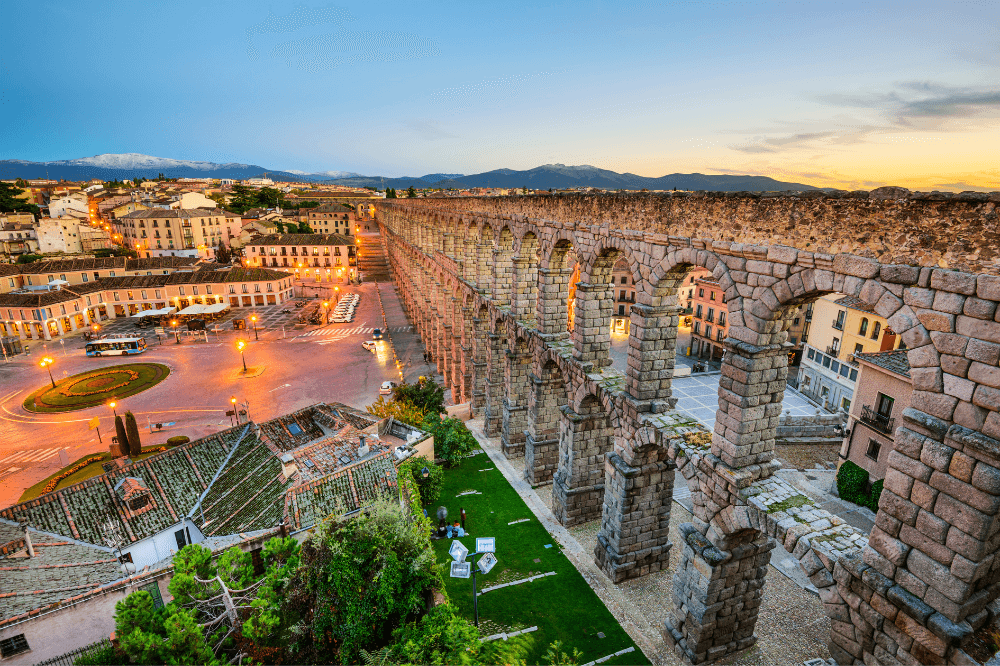
It’s no coincidence that it’s been a UNESCO World Heritage Site since 1985.
It was built between the 1st and 2nd centuries AD and is truly impressive: it stands out for its 28-meter height (as tall as an eight-story building) and its 167 arches.
The most mind-blowing part is how it was built without using any cement or mortar, held together only by gravity!
It carried water from the Sierra de Guadarrama over more than 16 kilometers.
Although it suffered damage in the 11th century, the Catholic Monarchs restored it at the end of the 15th century.
The restoration was so well done that it still retains its original Roman appearance today.
The Wall of Lugo (Lucus Augusti, Galicia)
Did you know that the Wall of Lugo is the only wall built by the Roman Empire that still has its full perimeter intact?
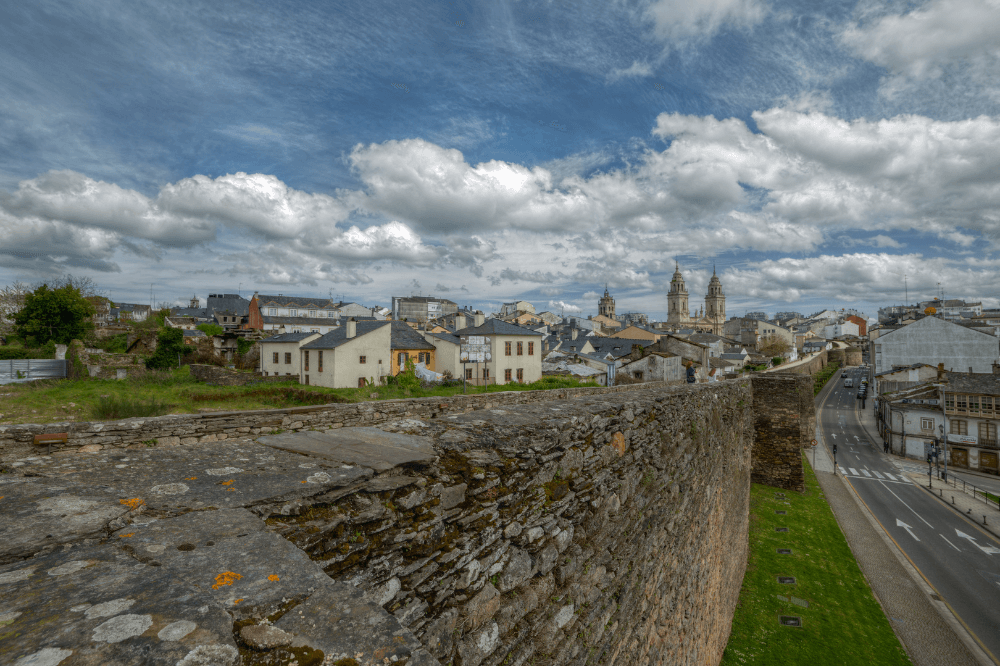
That’s why it’s a UNESCO World Heritage Site.
It was built between the 3rd and 4th centuries AD, has a perimeter of over two kilometers, and features nearly a hundred towers.
By the way, the Roman Bridge over the Miño River also retains its original Roman base, though it has undergone some modifications.
Unique Archaeological Sites and Transformed Landscapes
Here are some other incredible spots from historic cities to landscapes the Romans reshaped in their quest for gold.
Itálica (Santiponce, Seville)
This is another must-visit stop. Itálica was the first Roman city founded in Spain (and outside Italian territory).
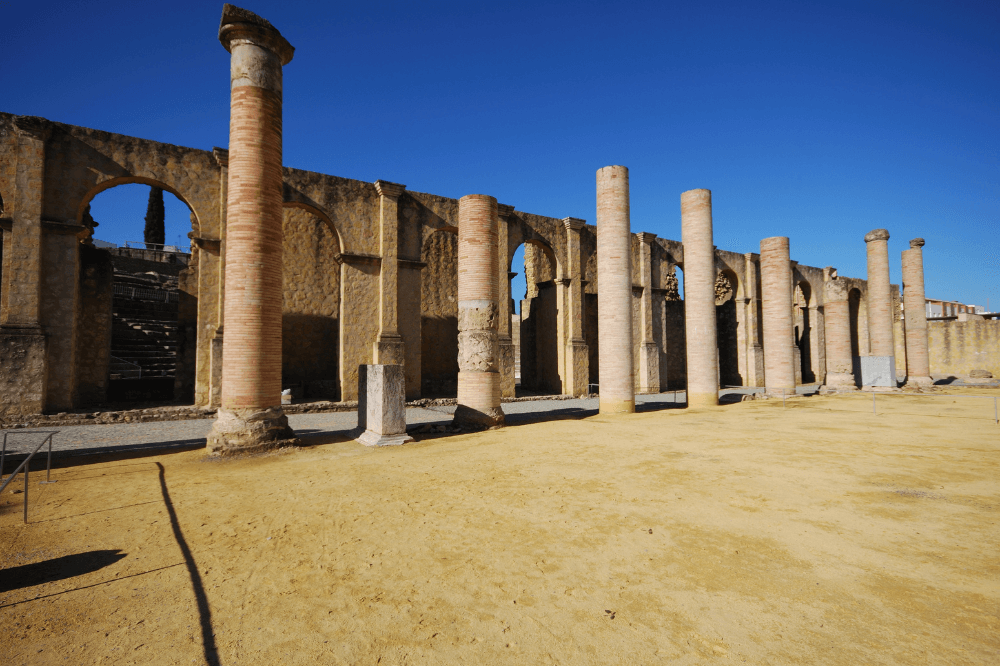
Even more impressively, it was the birthplace of Emperors Trajan and Hadrian!
What stands out the most is its massive Amphitheatre, which could seat up to 25,000 spectators.
You’ll also find Roman villas with stunning mosaics, like those in the House of the Planetarium and the House of the Exedra.
Home-Cooked Spanish meal on a rooftop with La Giralda views in Seville Center
Baelo Claudia (Tarifa, Cádiz)
If you’re looking for something different, head to Baelo Claudia.
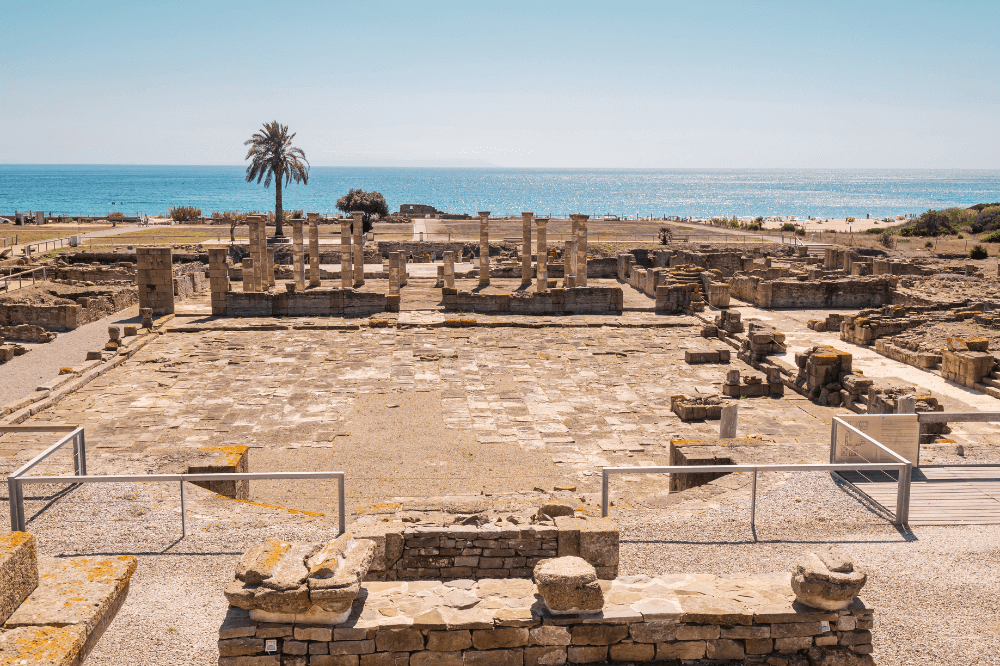
This is a truly unique city, built right next to Bolonia Beach, with direct views of the Strait of Gibraltar.
It was primarily a commercial town, focused on fishing, salt production, and the making of garum that famous fermented fish sauce.
There, you can see the forum (the best-preserved in ancient Hispania), the theatre, and the fish-salting factories.
Las Médulas (León, Castile and León)
If you love both nature and history, Las Médulas will leave you speechless.
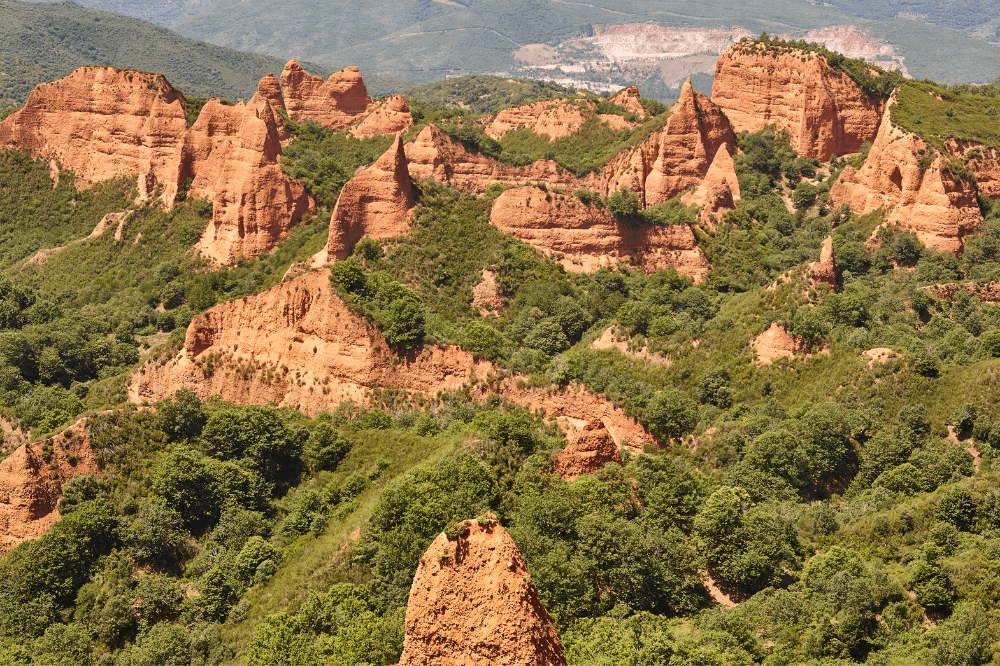
Declared a UNESCO World Heritage Site in 1997, this was the largest open-pit gold mine in the entire Roman Empire.
Today, it’s a reddish forest with labyrinthine rock formations the result of Roman gold extraction that began in the 1st century using an elaborate hydraulic system.
A true testament to Roman ambition!
Cartagena (Cartago Nova, Murcia)
Cartagena was a strategic stronghold, thanks to its incredibly important port on the Mediterranean.
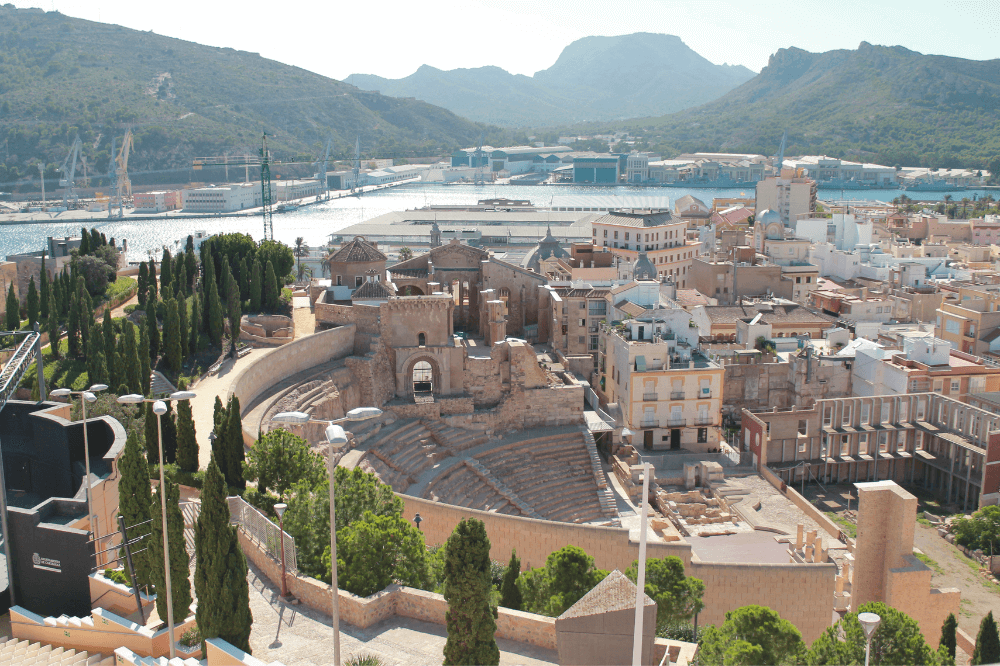
If you visit, don’t miss the Roman Theatre (discovered in 1988), and the Roman Forum Quarter, considered one of the largest urban archaeological parks in Spain.
Cuenca (Castilla-La Mancha)
This site is considered one of the most important archaeological areas in Spain, as it’s one of the best-preserved Roman cities.
The great thing is that in a single visit, you can see the remains of the theatre, amphitheatre, forum, wall, basilica, and baths.
Unique Monuments
Lastly, we couldn’t leave out these gems some less well-known, but just as fascinating.
Tower of Hercules (A Coruña)
This is the oldest Roman lighthouse in the world that still serves the same function the Romans gave it (1st–2nd centuries AD).
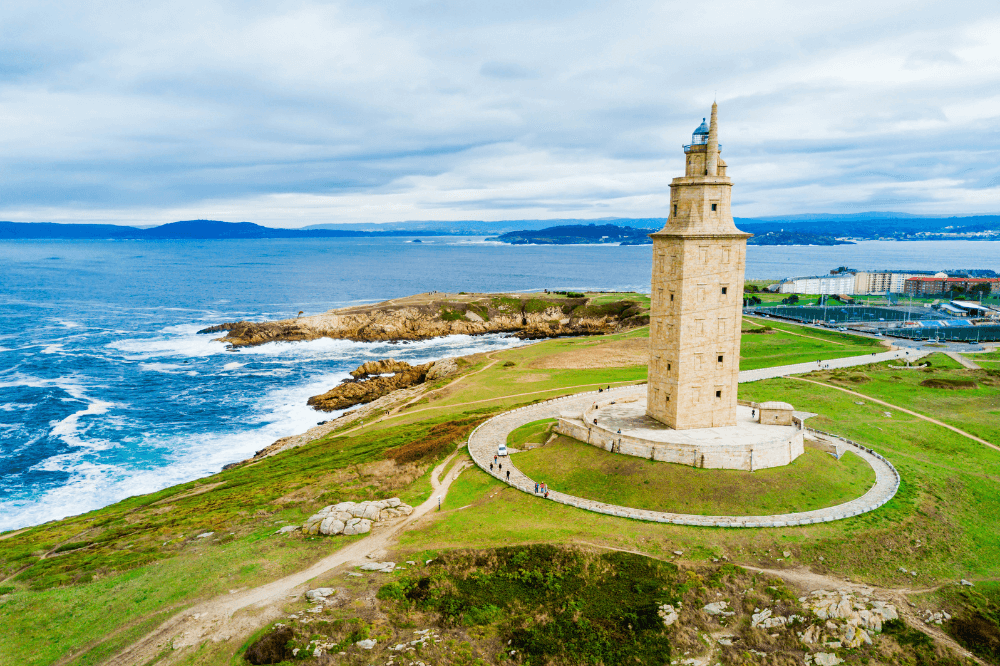
It’s also a UNESCO World Heritage Site.
Carmona Necropolis (Seville)
If you’re interested in the more intimate side of Roman life, this funerary site is very well preserved.
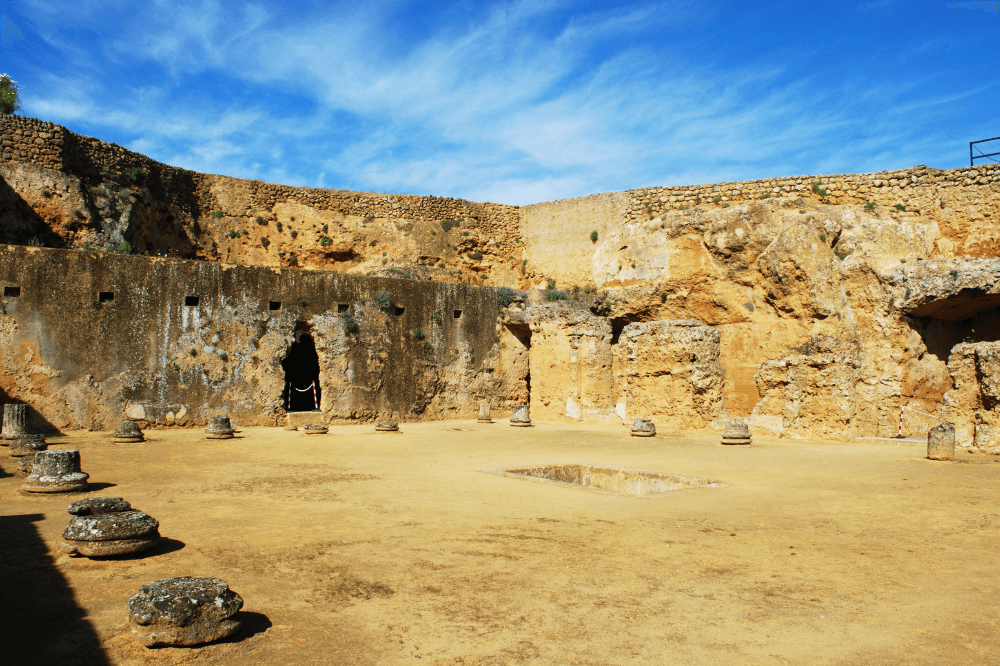
It reveals Roman burial rites, with tombs decorated with frescoes like the Tomb of Servilia and even spaces used for funeral banquets with the deceased.
Roman Bridge of Salamanca
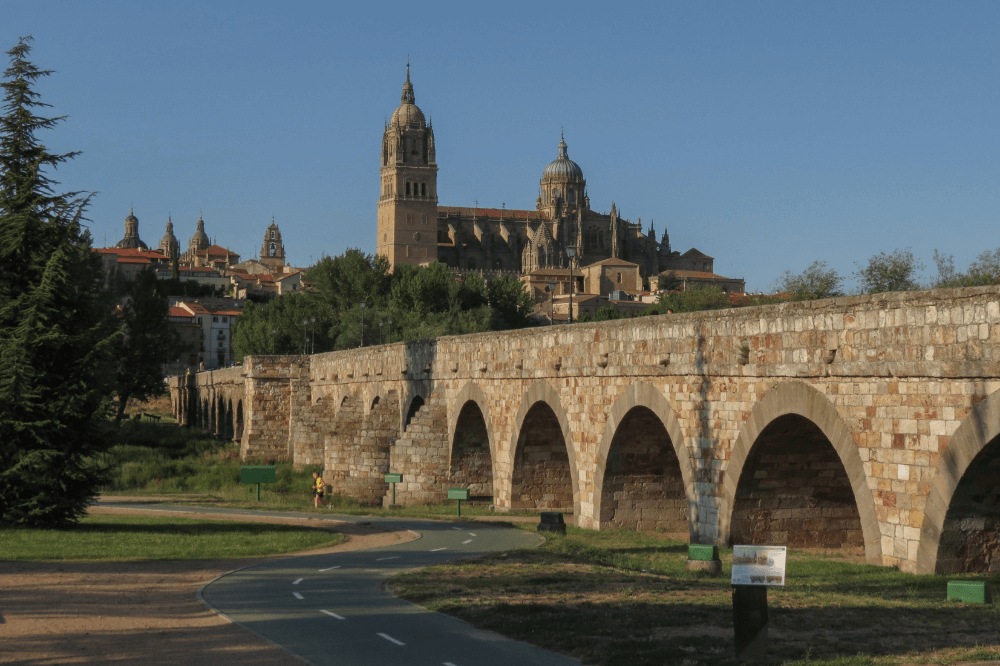
Pay close attention to the side that connects to the historic center, known as the “old bridge.” That section still preserves the original structure and materials from the Roman Empire.
Toledo (Toletum)
In Toledo, the Roman remains are a bit more hidden, buried beneath the layers of cultures that came afterward.
Even so, you can still find traces like the baths at Plaza de Amador de los Ríos and possible cisterns in the Cave of Hercules.
Discover the Culinary Legacy with Sazón The Folk Cook
You’ve explored cities and ruins now it’s time to experience culture unfiltered and in all caps.
Can you imagine that your next great cultural immersion isn’t in a museum, but in the kitchen of a local home?
If what you’re looking for is an authentic experience that truly connects you with the people and the place you’ve landed in, Sazón is your next stop.
Our home cooks open the doors of their kitchens to delight you with their best dishes those homemade stews prepared with love and care.
Don’t leave without tasting the flavor of real local life.
Stop being just a tourist and live, for a few hours, like a local.
Book your Sazón experience now and take a seat at the table where true Spanish culture is cooked.
Explore our experiences with local cooks.

